October 21st, 2013
 In cognitive design we focus on how to translate scientific insights into how minds work into new products, services, process improvements, better work environments and other innovations. One important insight with plenty of innovation potential is that our mental processes – thinking, learning, making decisions, self-control and the like, very much depend on how we use our bodies. That is, cognition is embodied. For example, we think better when we walk and gesture freely with our arms. So I am always on the lookout for new research into embodied cognition that could have practical implications.
In cognitive design we focus on how to translate scientific insights into how minds work into new products, services, process improvements, better work environments and other innovations. One important insight with plenty of innovation potential is that our mental processes – thinking, learning, making decisions, self-control and the like, very much depend on how we use our bodies. That is, cognition is embodied. For example, we think better when we walk and gesture freely with our arms. So I am always on the lookout for new research into embodied cognition that could have practical implications.
For example, a recent study from Princeton University found that feeling weighed down by guilt is more than a metaphor:
“We found that recalling personal unethical acts led participants to report increased subjective body weight as compared to recalling ethical acts, unethical acts of others or no recall. We also found that this increased sense of weight was related to participants’ heightened feelings of guilt, and not other negative emotions, such as sadness or disgust.”
This finding may have practical consequences. For example, related research suggests you may be able to regulate moral behavior by simulating the experience of being weighted down. Imagine for a moment if wearing a heavy backpack would actually decrease the chance of cheating on an exam or lying.
Interested to hear from readers that have seen other recent results from embodied cognition that could be useful to designers.
Image Source: Richard Gunther on ChristArt.com

Posted in Related Fields | 12 Comments »
October 16th, 2013
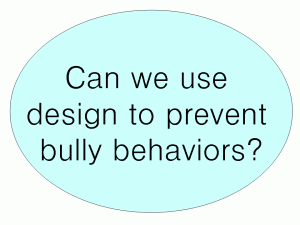 Bullying is a big problem in the US. It happens in schools, at work, on the internet, at home and in the community. Studies indicated that approximately 30% of US students are bullies or victims.
Bullying is a big problem in the US. It happens in schools, at work, on the internet, at home and in the community. Studies indicated that approximately 30% of US students are bullies or victims.
As the focus of cognitive design is to address deeply felt but unmet psychological needs, bullying is definitely a relevant challenge. Not only to help victims cope and ultimately forgive but to help design interventions that have the best chance of preventing bullying in the first place.
October is National Bullying Prevention Month and to help celebrate it Routledge has publish some free articles into the nature of the problem that are full of insights for cognitive designers.
I hope readers of the Cognitive Design blog will take up the challenge.

Posted in Events, Examples | 2 Comments »
October 7th, 2013
 The training magazine network is hosting a provocative ideas webinar that I am giving on using micro-learning techniques to change behavior and improve performance. It will run for free on January 15 at 1 pm ET for an hour. Hope to see you there.
The training magazine network is hosting a provocative ideas webinar that I am giving on using micro-learning techniques to change behavior and improve performance. It will run for free on January 15 at 1 pm ET for an hour. Hope to see you there.
Session Description:
Micro-learning is the tiny bursts of learning we do every day to solve problems, make decisions and improve performance. All training involves a micro-learning phase if the goal is behavior change and ROI. Trainers tend not to emphasize this last mile of learning because it is too personalized, short lived and entangled in work. Learn how new technologies and methodologies are changing that.
Discover a new method for including micro-learning in training which breaks learning content into its smallest relevant chunks called knowledge cards. Successful examples and demonstrations in leadership, innovation, teamwork and emotional intelligence will be presented.

Posted in Behavior Change, Events | 1 Comment »
October 1st, 2013

“The entries came pouring in from every corner of the world—real-world case studies and bold hacks tackling the intersecting challenges of redistributing power and equipping and energizing people to lead even when they lack formal authority.”
Using Micro-Learning to Boost Influence Skills in Emergent Leaders

Posted in Behavior Change, Events | No Comments »
September 26th, 2013
Changing behavior requires measurement and timely feedback. Getting accurate data and keeping track of your progress can take a lot of effort. Sometimes that effort is enough to derail your behavior change effort. To address that problem a number of companies are offering personal body sensors and software to help make measurement and tracking much easier. We have covered some of these in the Cognitive Design blog, for example, see Using Data to Change Behavior.
 A reader recently sent me a note about BodyMedia. It includes an armband with multiple sensors and associated software. The senors measure your motion, heat flux, galvanic skin response and skin temperature. You get data to guide behavior change around weight, fitness and sleep management. Data is collected and displayed in a dashboard called the activity manager. You can access it from from a smart phone and other devices.
A reader recently sent me a note about BodyMedia. It includes an armband with multiple sensors and associated software. The senors measure your motion, heat flux, galvanic skin response and skin temperature. You get data to guide behavior change around weight, fitness and sleep management. Data is collected and displayed in a dashboard called the activity manager. You can access it from from a smart phone and other devices.
There is some research that supports the claim this system changes health behaviors. You can get the armband and 3 months access to the software in the $100-$150 range. After that the activity manager (software) costs you $7 per month.
Very interested to hear from other readers that are using BodyMedia. How easy was it to build into your daily life? Is it changing your behavior?

Posted in Behavior Change | No Comments »
September 22nd, 2013
There is little doubt that creativity and innovation plays a big role in the US economy. Translating new ideas into better ways of working and market-busting products and services is a serious engine of value creation. Few debate that but many debate how well the US is doing with innovation. Some argue we have a creativity crisis while others argue we are on the cusp of an innovation-driven economic revolution.
 A recent column by Geoff Colvin in Fortune Magazine, A Mighty Culture of Innovation Cannot Be Taken For Granted, offers some interesting insight into the debate. Quoting two global studies he notes that the US scores high in innovation and that countries that do better tend to be much smaller. The US is the best large and innovative economy by far. Mr. Colvin also suggest that the reason for that is culture.
A recent column by Geoff Colvin in Fortune Magazine, A Mighty Culture of Innovation Cannot Be Taken For Granted, offers some interesting insight into the debate. Quoting two global studies he notes that the US scores high in innovation and that countries that do better tend to be much smaller. The US is the best large and innovative economy by far. Mr. Colvin also suggest that the reason for that is culture.
That’s the good news. The bad news is that by some measures it looks like the US’s culture of innovation is eroding. For evidence he quotes the World Values Study that ranked the US 10th on placing importance on “thinking up new ideas and being creative”. More alarming is the finding that Torrance test scores have been declining since 1990. The Torrance test has been used to measure the level of creativity in US students for over 50 years.
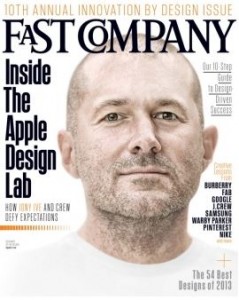 For a counter point check out Fast Company’s 10th Annual Innovation by Design Issue. A major theme is how the US consumer is putting a premium on great experiences and products with high design content. Design thinking both reflects an innovation culture and transforms an innovation-driven economy.
For a counter point check out Fast Company’s 10th Annual Innovation by Design Issue. A major theme is how the US consumer is putting a premium on great experiences and products with high design content. Design thinking both reflects an innovation culture and transforms an innovation-driven economy.
Of special interest to readers of the Cognitive Design Blog is the section outlining where is designing going next. Margaret Rhodes points out:
“Thoughtful design doesn’t just enable our habits; it pushes us to improve behavior making us more economical, reflective and responsible”
Designs that offer us an opportunity to achieve lasting behavior change in areas such as health, ethics, personal savings and being green offer tremendous potential for creating social and economic value on a macro scale. Delivering such changes requires a deep understand of how human minds actually work and puts cognitive design at the center of the innovation economy.
So what is the state of creativity in the US? Is it on the decline or swelling to new levels?

Posted in Behavior Change, Related Fields | 1 Comment »
September 18th, 2013
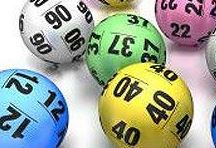 The Journal of Consumer Research is a excellent source of insights into how our minds work. Why and how people buy things is the most studied forms of psychology on the planet. Many of the insights go beyond the context of making a purchase and are therefore useful to cognitive designers working in all areas.
The Journal of Consumer Research is a excellent source of insights into how our minds work. Why and how people buy things is the most studied forms of psychology on the planet. Many of the insights go beyond the context of making a purchase and are therefore useful to cognitive designers working in all areas.
Take for example the recent article on how entering lotteries might undermine self-control:
“The author investigated why materialism leads to poor self-control and found that materialistic thoughts are specific and concrete, and that the more materialistic thoughts a consumer has, the more likely he or she is to demonstrate a lack of self-control. Prior research has shown that when people’s minds are occupied with concrete thoughts, they tend to seek immediate gratification.”
This has clear implications for cognitive designers working in behavior change. You can access the entire article HERE.

Posted in Behavior Change | 2 Comments »
September 8th, 2013
 Positive psychology seeks to understand and improve talent, happiness, thriving, adaptability, well-being and other means by which we flourish and succeed. It has been recognized as a formal branch of psychology for over 15 years. It provides a unique and practical window into “how our minds actual work” and is therefore a vital source of insights for cognitive designers.
Positive psychology seeks to understand and improve talent, happiness, thriving, adaptability, well-being and other means by which we flourish and succeed. It has been recognized as a formal branch of psychology for over 15 years. It provides a unique and practical window into “how our minds actual work” and is therefore a vital source of insights for cognitive designers.
But what has it taught us? While that question is far too broad to deal with in a single post, I did find an interesting article, Three Insights from the Frontiers of Positive Psychology, that offers an interesting perspective. Here is the bottom line:
1. Being mindful (fully in the present moment) is essential for happiness but thinking about the future, in a constructive and empowering way is essential for meaningfulness.
2. Regular detachment from work has greater restorative power than your typical vacation.
3. Physical design of our environment has a distinct and lasting impact on our mood and other mental states. Open, green well-kept spaces have a positive impact.
None of these insights is a surprise. Indeed some are a part of our folk psychology or wisdom. For example, insight two sounds a lot like “don’t bring your work home”. While this is true having a scientific understanding or explanation does have its advantages. Most notably it helps to rationally justify investments in certain types of interventions and will take some of the guess work out of our design efforts.
It falls to the cognitive designer to turn these insights into useful interventions, programs, products, services and daily habits that help us flourish.

Posted in Events, Related Fields | No Comments »
September 4th, 2013
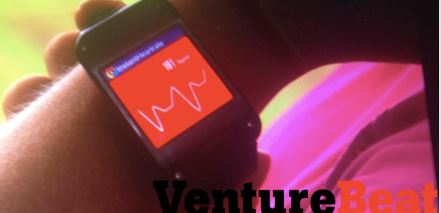
Venture Beat is offering an early look at Samsung’s SmartWatch. It has a camera, is focused on wellness/fitness, integrates with the phone/tablet and has internet access.

Posted in Behavior Change | No Comments »
August 30th, 2013
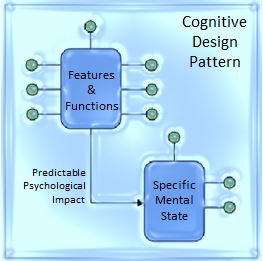 In cognitive design we look for specific features and functions that reliably produce a given psychological impact or mental state. For example, the facial features of big round eyes, a prominent forehead and pudgy cheeks generates the psychological response that what we see is cute, adorable and even squeezable.
In cognitive design we look for specific features and functions that reliably produce a given psychological impact or mental state. For example, the facial features of big round eyes, a prominent forehead and pudgy cheeks generates the psychological response that what we see is cute, adorable and even squeezable.
I have cataloged 310 such design patterns and the theories behind them. But I am always on the lookout for more. A new entry I am considering is based on the research, Rituals Enhance Consumption, recently reported in Psychological Science.
The researchers conducted four experiments that suggest adding rituals and delays to food consumption more deeply involves us in the experience of eating and has a significant impact on how much flavor and enjoyment we experience. And the rituals do not need to be complex. Here is what they used:
“Without unwrapping the chocolate bar, break it in half. Unwrap half of the bar and eat it. Then, unwrap the other half and eat it.”
Of course, the experimental situation is contrived and so applying this result requires establishing a personal ritual. Personal rituals have meaning and create a state of mindfulness and thus enhance the experience. But how do we break that down into the features and functions of a design pattern? Saying we need to ritualize is too vague.

Posted in Examples, Psychographics | 2 Comments »
 In cognitive design we focus on how to translate scientific insights into how minds work into new products, services, process improvements, better work environments and other innovations. One important insight with plenty of innovation potential is that our mental processes – thinking, learning, making decisions, self-control and the like, very much depend on how we use our bodies. That is, cognition is embodied. For example, we think better when we walk and gesture freely with our arms. So I am always on the lookout for new research into embodied cognition that could have practical implications.
In cognitive design we focus on how to translate scientific insights into how minds work into new products, services, process improvements, better work environments and other innovations. One important insight with plenty of innovation potential is that our mental processes – thinking, learning, making decisions, self-control and the like, very much depend on how we use our bodies. That is, cognition is embodied. For example, we think better when we walk and gesture freely with our arms. So I am always on the lookout for new research into embodied cognition that could have practical implications.








